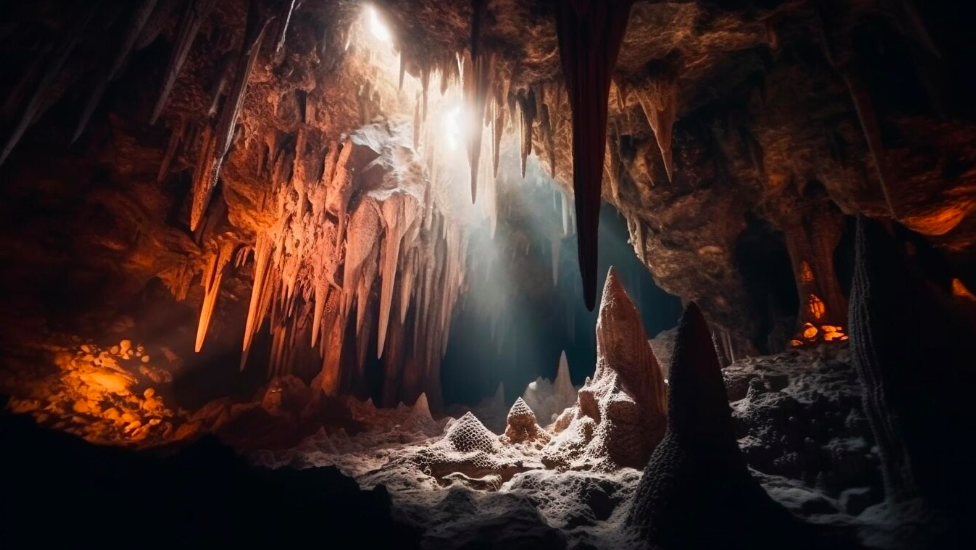Mother Earth's Hidden Treasures: Unraveling the Wonders of Caves and Caverns- cave formations and ecosystems

Caves and caverns, often hidden beneath the Earth's surface, hold a certain mystique that has fascinated humans for centuries. In this comprehensive guide, we will embark on a journey to unveil the wonders of these subterranean realms, from awe-inspiring cave formations to the delicate ecosystems that thrive within. Join us as we delve into the heart of Mother Earth's hidden treasures.
The Enigmatic Beauty of Caves
Caves have long been celebrated for their enchanting beauty. These natural formations, sculpted over millions of years, never cease to amaze with their otherworldly splendor. From stalactites that hang like chandeliers to stalagmites that rise from the ground like ancient sentinels, each cave tells a unique geological story.
Exploring Stalactites and Stalagmites
One of the most captivating features of caves is the intricate formations of stalactites and stalagmites. These calcium-rich structures are created by the slow dripping of mineral-laden water. Over time, they grow and take on fantastical shapes, adorning the cave's ceiling and floor. Exploring these formations is like stepping into a surreal wonderland.
The Sublime World of Underground Lakes
Deep within some caves lie hidden underground lakes, their crystal-clear waters reflecting the cave's beauty like a mirror. These pristine bodies of water often harbor unique ecosystems, including blind fish and albino amphibians. These secluded habitats are a testament to the resilience of life in the most unlikely of places.
Mother Earth's Hidden Treasures: Unraveling the Wonders of Caves and Caverns - cave formations and ecosystems
In this section, we will explore the delicate balance of ecosystems thriving in caves. It's a world where darkness reigns, but life persists in remarkable ways.
Life in the Abyss
Despite the absence of sunlight, caves are teeming with life. Microorganisms, adapted to the pitch-black environment, form the foundation of cave ecosystems. These microscopic creatures play a crucial role in breaking down organic matter and sustaining life further up the food chain.
The Astonishing Adaptations of Cave Creatures
Many cave-dwelling species have evolved unique adaptations to thrive in complete darkness. From eyeless cavefish with heightened senses of touch and smell to translucent cave-dwelling insects, these creatures are a testament to the power of adaptation in the face of adversity.
The Fragile Balance
Cave ecosystems are delicate and incredibly sensitive to disturbances. Human activities, such as pollution and careless exploration, pose a significant threat to these underground sanctuaries. Conservation efforts are essential to preserve the fragile balance of life in caves for generations to come.
FAQs
Q: How are caves formed?
Caves are primarily formed through a process called speleogenesis, which involves the dissolution of soluble rocks like limestone, gypsum, and dolomite by natural acids, creating hollow spaces.
Q: Are there any cave formations unique to certain regions?
Yes, each cave's formations are influenced by its geological makeup. For instance, Carlsbad Caverns in the United States is known for its massive underground chambers, while Reed Flute Cave in China boasts stunning multicolored stalactites.
Q: Do all caves have underground ecosystems?
No, not all caves have ecosystems. It depends on various factors such as the availability of water and organic matter. Some caves may have thriving ecosystems, while others remain lifeless.
Q: How can we explore caves responsibly?
Exploring caves responsibly involves following guidelines set by conservation organizations, minimizing human impact, and respecting the delicate ecosystems within.
Q: Are cave ecosystems at risk?
Yes, cave ecosystems are at risk due to pollution, habitat destruction, and the introduction of invasive species. Conservation efforts are crucial to protect these unique environments.
Q: Can anyone explore caves, or is it restricted?
While many caves are open to the public, some may have restrictions to protect fragile formations or ecosystems. It's essential to check guidelines and obtain necessary permits before exploring caves.
Conclusion
In our quest to unravel the wonders of caves and caverns, we've ventured into a world both mesmerizing and fragile. From the stunning formations that grace cave walls to the remarkable ecosystems that thrive in darkness, these hidden treasures of Mother Earth are a testament to the planet's diversity and resilience. Let us cherish and protect these underground wonders, ensuring that they continue to captivate and inspire generations to come.


